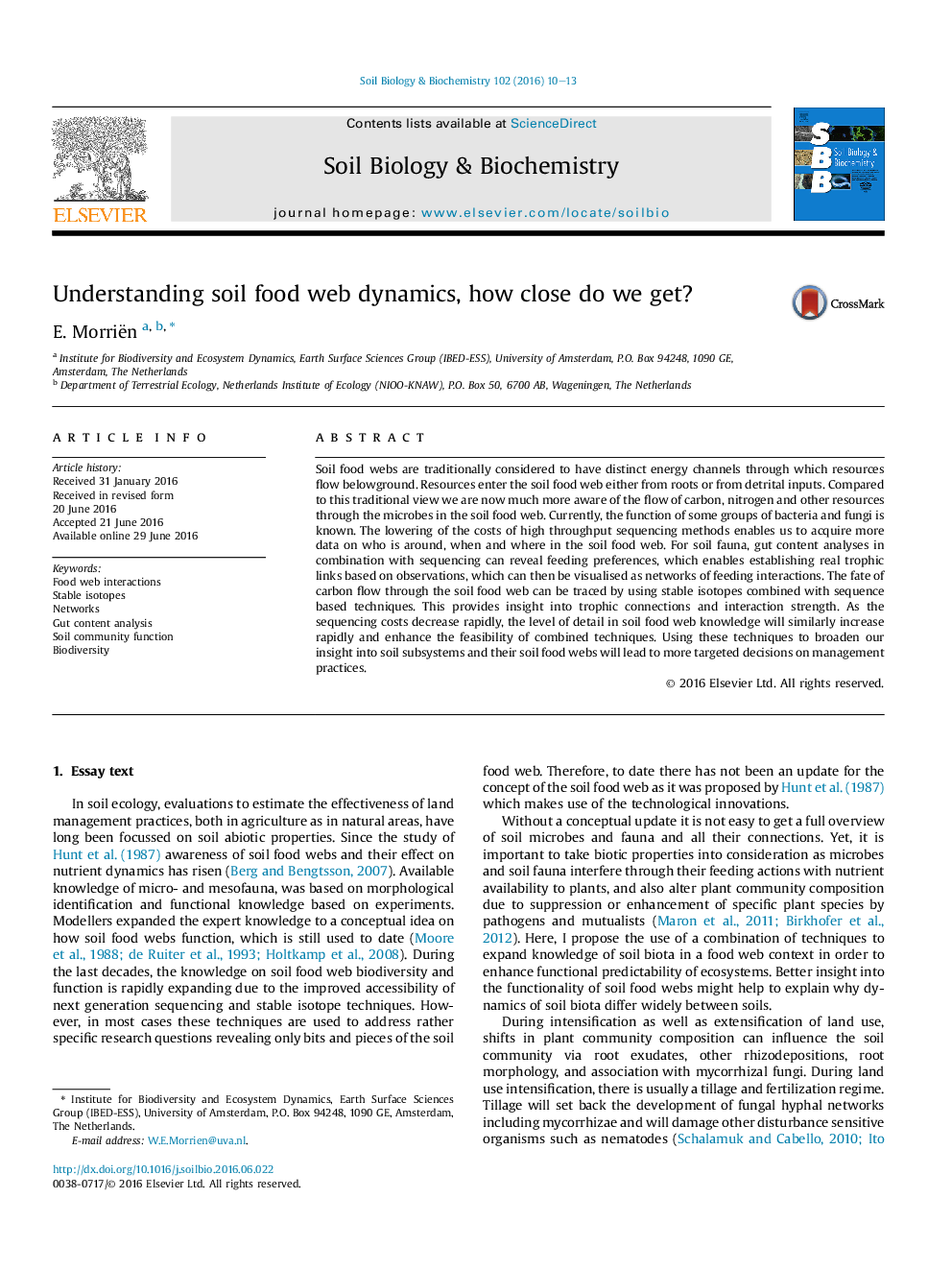| Article ID | Journal | Published Year | Pages | File Type |
|---|---|---|---|---|
| 5516546 | Soil Biology and Biochemistry | 2016 | 4 Pages |
Abstract
Soil food webs are traditionally considered to have distinct energy channels through which resources flow belowground. Resources enter the soil food web either from roots or from detrital inputs. Compared to this traditional view we are now much more aware of the flow of carbon, nitrogen and other resources through the microbes in the soil food web. Currently, the function of some groups of bacteria and fungi is known. The lowering of the costs of high throughput sequencing methods enables us to acquire more data on who is around, when and where in the soil food web. For soil fauna, gut content analyses in combination with sequencing can reveal feeding preferences, which enables establishing real trophic links based on observations, which can then be visualised as networks of feeding interactions. The fate of carbon flow through the soil food web can be traced by using stable isotopes combined with sequence based techniques. This provides insight into trophic connections and interaction strength. As the sequencing costs decrease rapidly, the level of detail in soil food web knowledge will similarly increase rapidly and enhance the feasibility of combined techniques. Using these techniques to broaden our insight into soil subsystems and their soil food webs will lead to more targeted decisions on management practices.
Related Topics
Life Sciences
Agricultural and Biological Sciences
Soil Science
Authors
E. Morriën,
